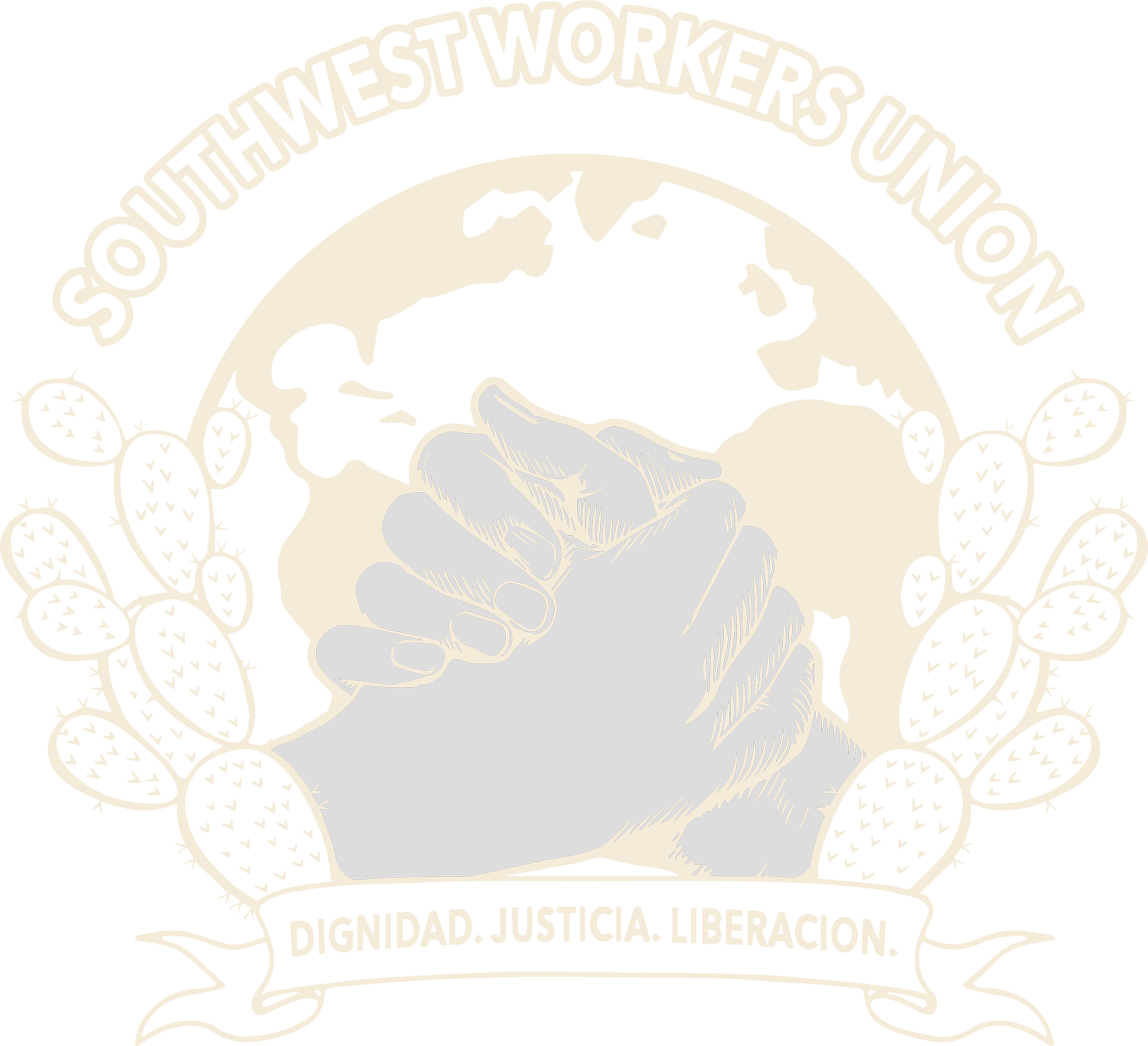Air Quality talk in San Antonio, TX
My name is Grace and I have the great opportunity to be interning with Southwest Workers’ Union this summer! I was born and raised on the Northeast side of San Antonio, and I go to college in Colorado. My focus this summer is working with SWUs Environmental Justice initiatives, so far I have been learning more about the environmental problems in the region including the other national, and global issues of injustices. I’m really looking forward to working with and learning from SWU this summer. Here these are some of the things I learned about researching air quality in San Antonio:
Lets start with the different causes, and effects to air pollution. Currently San Antonio is affected by Ground-level Ozone, it is considered to be one of the most harmful effects is in our air quality. Ground-level ozone is the main component of smog, and this type of air pollution most harmful to people's health; exposure to Ground-level Ozone causes respiratory problems like coughing, chest pain, irritation of the throat and lungs leading to health diseases like asthma, bronchitis and emphysema. There is also a risk, and the increase likelihood of heart attack or stroke. These health problems are a concern in which SWU brings awareness to children, youth, elders, and working-class members of our community who is exposed to air contamination.
Ozone located in the stratosphere protects us from dangerous UV rays from the sun. Having mentioned the concern about Ground-level Ozone, I will mention its formation. Ground-level Ozone is created when Nitrogen Oxide (NOx) reacts with Volatile Organic Compounds (VOCs) under the presence of heat, and sunlight--a green house gas--Nitrogen Oxide is 300 times more damaging to the environment than carbon dioxide. It is important to clarify that trees and other vegetation naturally produce both NOx and VOCs and we would have them in the environment regardless of human interaction. However, it is human activity that has disrupted nature’s balance completely off and produced unnatural amounts of these compounds into the environment. We need to observe the environmental destruction led by corporate companies using extreme energies, and extraction processes that amplifies the contamination to mother earth, and our health.
People have increased the amount of NOx present in the air through agricultural, transportational, and industrial habits. For San Antonio, half of NOx emissions come from vehicles and about 30% come from major industrial facilities, like power plants, chemical plants and refineries. VOCs come from products like paints, gasoline, solvents, pesticides, glues, and cleaning supplies. VOCs are actually a bigger problem indoors than outside due to all the household products people use. But outdoors, over 60% of VOC emissions for San Antonio come from smaller commercial buildings, like gas stations, and residential buildings.[1]
The city’s response to controlling ozone levels is primarily based on voluntary actions. The Environmental Protection Agency designed the Air Quality Index, which rates air quality from “good” to “very unhealthy,” to help the public understand the daily risk of air pollution and “protect themselves.” There are three levels of “unhealthy”: unhealthy for sensitive populations, unhealthy, and very unhealthy. When any of these warnings are given for a certain day, business owners and individuals are supposed to do things like drive less and avoid being outside to protect themselves that day. However, there are state officials who do not view our health to be a priority and does not regulate injustices done to our environment.
There are so many issues with that system. It would be great to have a system that seeks to give people more information but people need to first have an understanding of what Ground-level Ozone and environmental issues are in general to understand why it's important. More importantly though a just transition for putting the responsibility on individuals doesn’t address the real systemic issues we are facing in our health, economic justice, and workers rights. Huge industries, like commercial agriculture and fracking, are hugely responsible for the contaminants in our air but they are not being held responsible like they should be. Relying on individuals to change their habits while letting huge companies do as they please helps the very few at the expense of many.
San Antonio is included in the Eagle Ford Shale region; drilling for oil and gas in the region has increased hugely since 2011 but effective regulation hasn’t come with that growth. Due loose and protected government regulation, it is difficult for SWU to document how many emissions are released in the air by drilling sites. However, the Alamo Area Council of Governments did an investigation concluding that most likely more emissions are being released into the air than allowed and certainly more than is healthy for the environment. These emissions contain VOCs that can then travel in the air throughout the region, including San Antonio, to mix with NOx and create more ground-level ozone. A correlation can be seen over the past years with the development of the Eagle Ford Shale region and increased air pollution in the region.[2]
Familias of color from low-income and working-class are the frontline communities of all ages are more likely to develop and be diagnosed with asthma, other breathing problems than predominately white families with socio-economic advantages.
- Grace Obregon
* for access to cited works given, please copy and paste links into your browser
http://www.nrdc.org/air/files/LatinoAirReport.pdf
[1] http://texasalliance.org/wp-content/uploads/2013/10/TCEQs-San-Antonio-Air-Quality-Update.pdf
